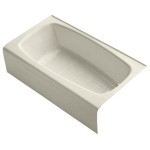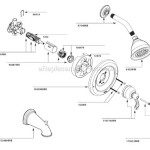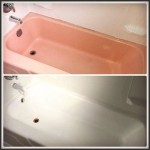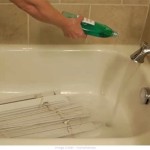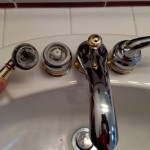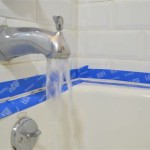How To Unclog A Bathtub Drain Using Baking Soda and Vinegar
A clogged bathtub drain is a common household plumbing issue that can be easily resolved using readily available pantry staples: baking soda and vinegar. This method offers a cost-effective and environmentally friendly alternative to harsh chemical drain cleaners, which can damage pipes over time.
The effectiveness of baking soda and vinegar in unclogging drains stems from a simple chemical reaction. Baking soda (sodium bicarbonate) is a base, while vinegar (acetic acid) is an acid. When combined, they produce carbon dioxide gas. This gas creates pressure within the drain, helping to dislodge hair, soap scum, and other debris that may be causing the blockage.
Before beginning the process, it is essential to remove any standing water from the bathtub. This can be achieved using a cup, sponge, or other suitable tool. Removing standing water ensures the baking soda and vinegar can reach the clog directly and react effectively.
The first step involves pouring one cup of baking soda down the drain. It is important to ensure the baking soda reaches as far down the drain as possible. A funnel can be useful for this process, minimizing spillage and maximizing delivery.
Following the baking soda, one cup of vinegar should be poured down the drain. White distilled vinegar is typically recommended due to its relatively low cost and effectiveness. Upon contact with the baking soda, the vinegar will immediately begin to fizz. This fizzing action is the carbon dioxide gas being produced, indicative of the chemical reaction taking place.
Once the vinegar has been poured, the drain should be covered immediately. A stopper, a small plate, or even a damp cloth can be used to seal the drain opening. Covering the drain prevents the carbon dioxide gas from escaping, forcing it to work on the clog. The drain should remain covered for at least 30 minutes, and for particularly stubborn clogs, up to an hour may be necessary.
After the waiting period, the drain cover can be removed. At this point, hot water should be poured down the drain. The hot water helps to flush away the dislodged debris and any remaining baking soda and vinegar mixture. It's recommended to use at least two quarts of boiling water for optimal results.
To verify the drain is functioning correctly, observe the water drainage after the hot water flush. If the water drains freely, the clog has likely been successfully removed. However, if the water still drains slowly, the process can be repeated. In some cases, multiple applications of baking soda and vinegar may be required to completely clear the blockage.
For particularly stubborn clogs that resist the baking soda and vinegar method, alternative solutions may be necessary. A plumbing snake or auger can be used to physically break up and remove the blockage. If the clog persists even after attempting these methods, it is advisable to consult a professional plumber to address the issue.
Regular preventative measures can be taken to minimize the occurrence of clogged bathtub drains. Installing a hair strainer over the drain can help prevent hair and other debris from entering the pipes. Periodically flushing the drain with hot water can also help to keep the pipes clear. Additionally, avoiding pouring grease or oil down the drain can prevent the buildup of fatty substances that contribute to clogs.
While baking soda and vinegar can effectively resolve many common bathtub drain clogs, some clogs may require alternative methods or professional intervention. Understanding the process and limitations of this method allows for informed decision-making when addressing plumbing issues.
This method provides a safe, environmentally friendly, and often effective approach to tackling clogged bathtub drains. The readily available ingredients and simple application make it a valuable tool for any homeowner. Remembering the necessary steps and understanding the underlying chemical reaction ensures optimal results.
Furthermore, combining this method with preventative measures can significantly reduce the frequency of clogs, maintaining smooth and efficient drainage in the bathtub. Regular maintenance and proactive approaches are key to preventing plumbing problems and ensuring the long-term health of household pipes.
Utilizing baking soda and vinegar for drain cleaning offers a practical solution that aligns with both economic and environmental considerations. This readily available, natural approach provides an effective first line of defense against minor drain blockages, minimizing the need for harsh chemicals or costly professional services in many instances.

Unclog Drains Naturally With Baking Soda And Vinegar Mom 4 Real

Why You Should Never Use Baking Soda And Vinegar To Clean Clogged Drains

Unclog Drains Naturally With Baking Soda And Vinegar Mom 4 Real

How To Unclog A Bathtub Drain With Hot Water Baking Soda And White Vinegar
Tiktok To Unclog Drains With Baking Soda And Vinegar Works

How To Unclog A Bathtub Drain Bleach Baking Soda And Others

How To Easily Unclog A Drain Without Harsh Chemicals Baking Soda Vinegar

Unclog Drains Naturally With Baking Soda And Vinegar Mom 4 Real

Why You Should Never Use Baking Soda And Vinegar To Clean Clogged Drains

How To Unclog A Bathtub Drain With Hot Water Baking Soda And White Vinegar


